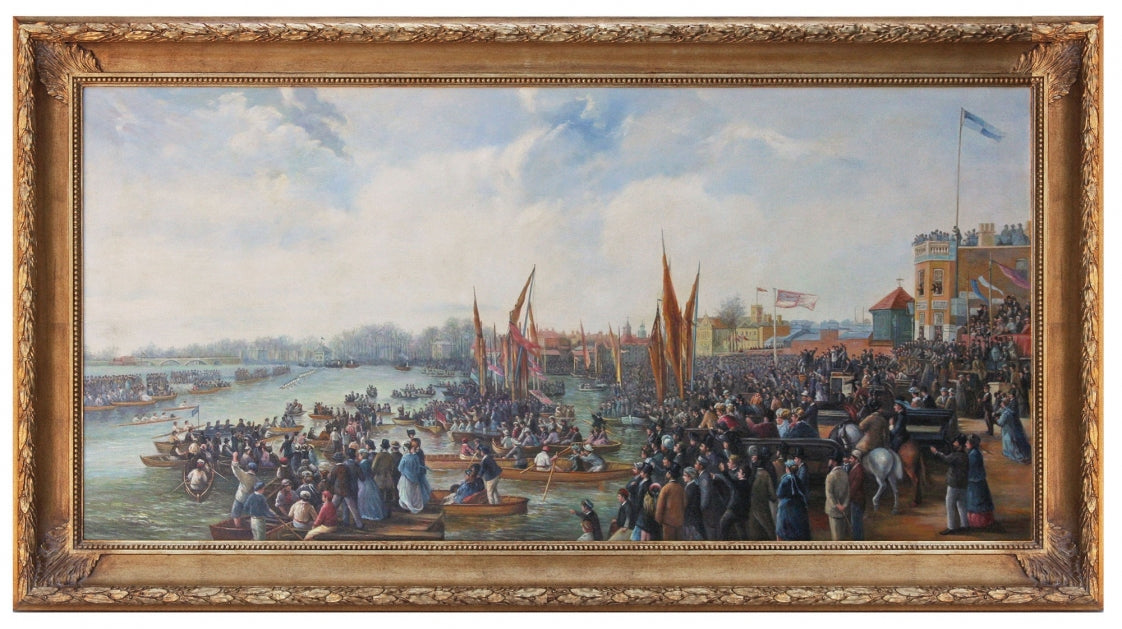
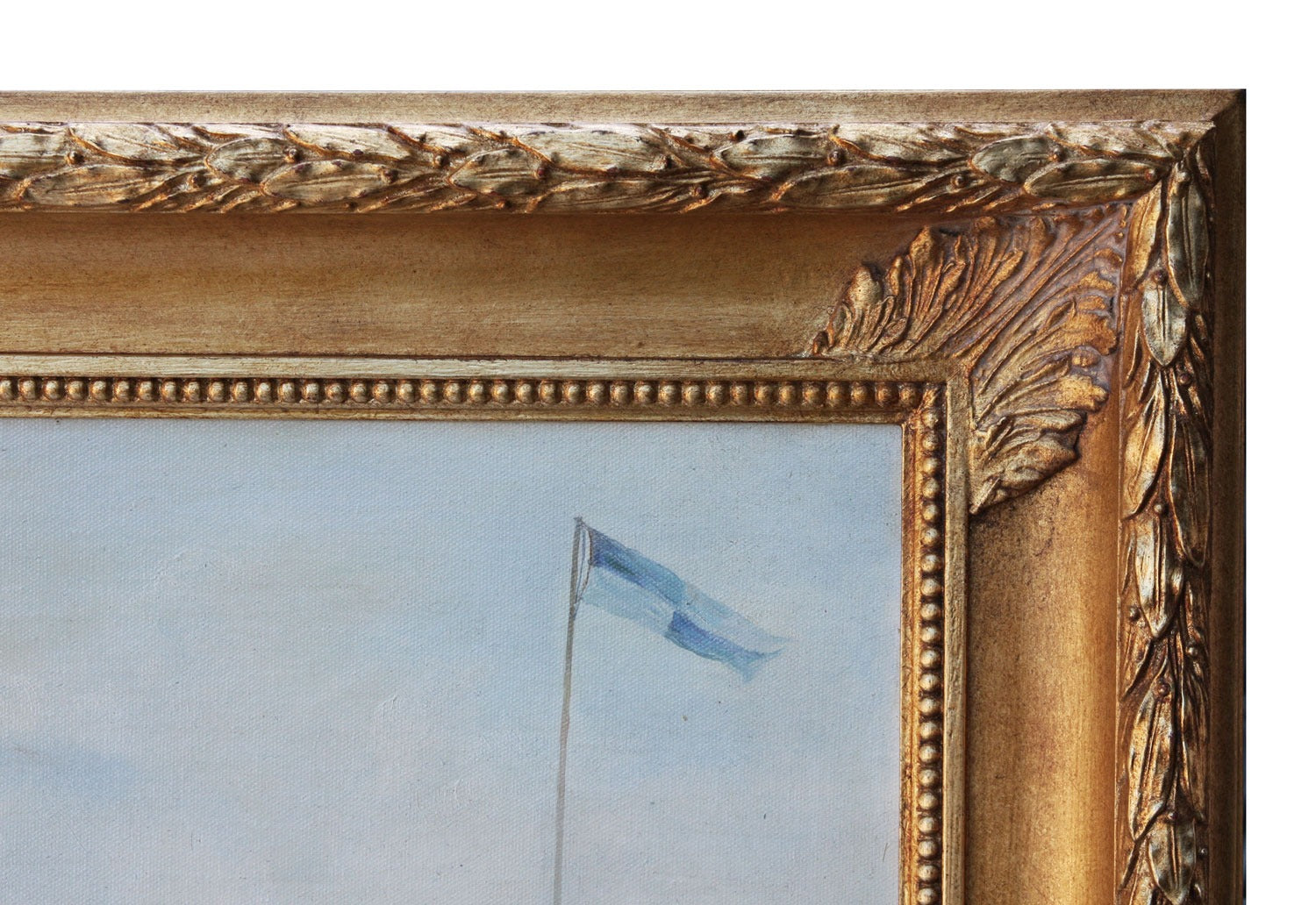
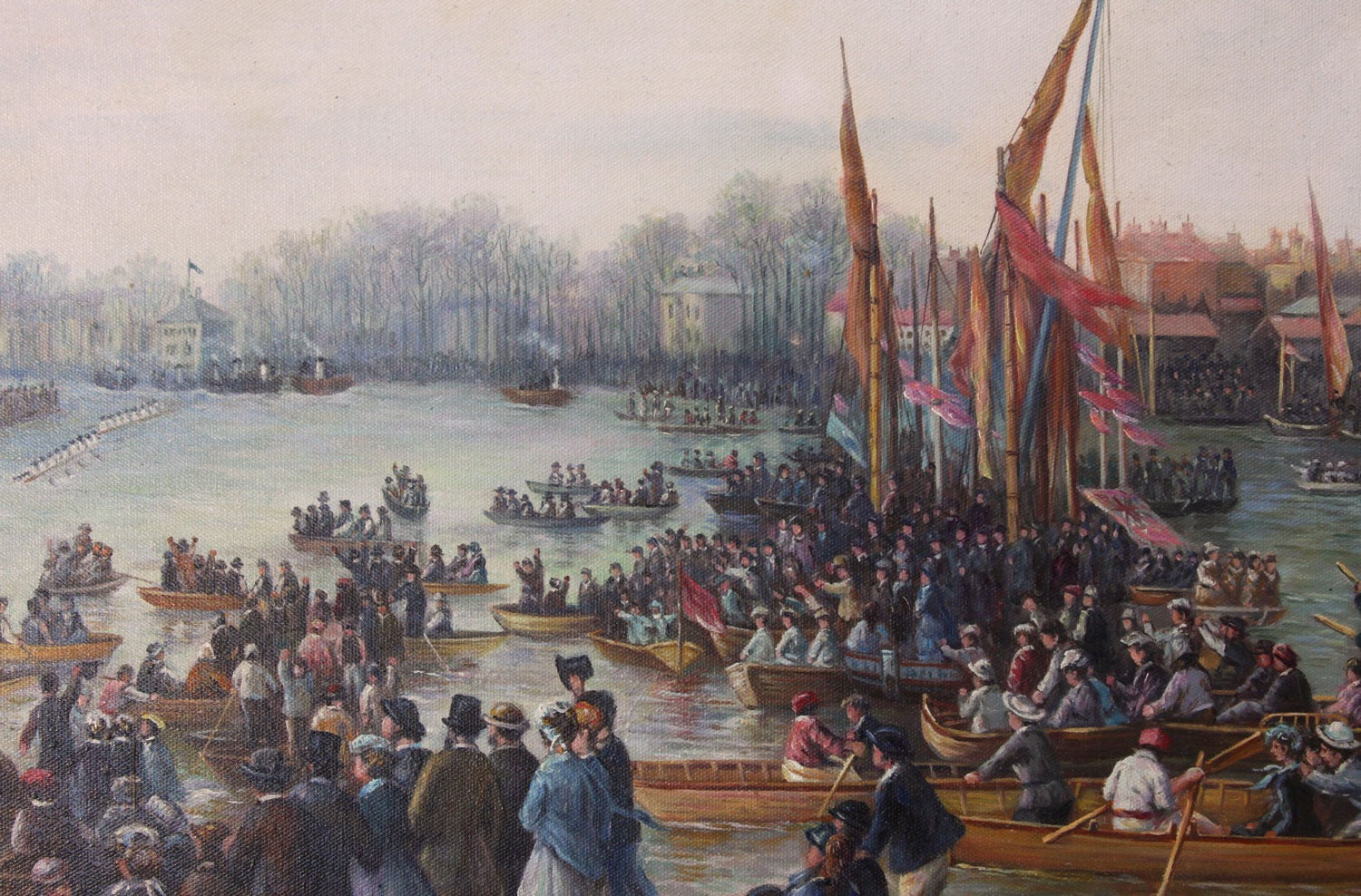
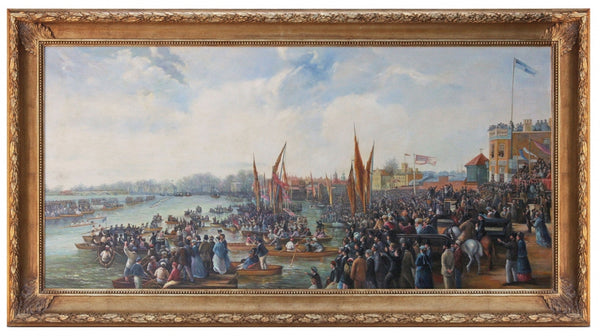
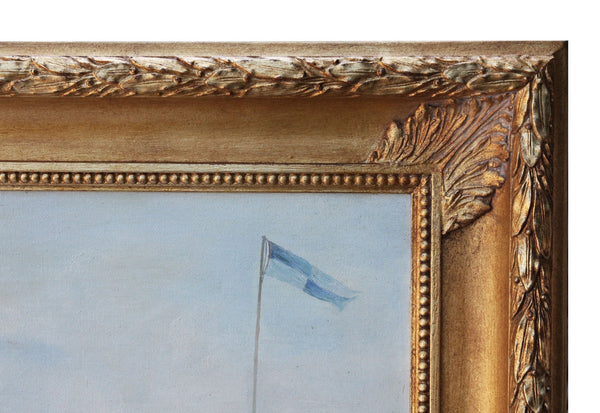
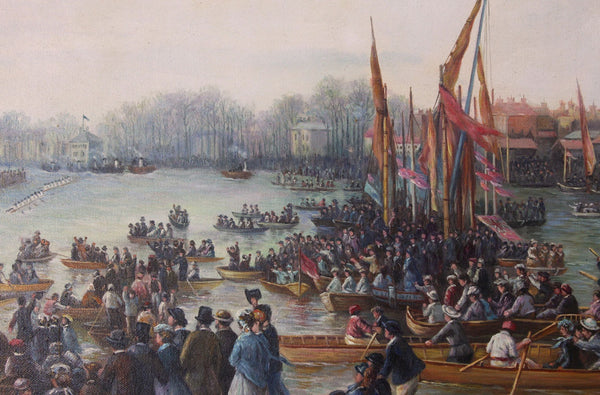



An oil painting, in the style of James Baylis Allan, captures the finish of the Oxford and Cambridge Boat Race. The scene is bustling with excitement as the two teams approach the end of the race. Spectators crowd the riverbanks, some leaning from windows, hanging from lampposts, or standing on boats to get a better view.
The Oxford and Cambridge Boat Race has a storied history. The first race took place in 1829 at Henley-on-Thames. Following a challenge between two old Harrovian school-friends. Charles Merivale, a student at St John’s College, Cambridge, and Charles Wordsworth, who studied at Christ Church, Oxford.
The races, held for the next two decades, with no set course, but became an annual fixture from 1856, only interrupted by the two world wars. Inspired by an actual race in 1867, when Oxford won by half a length.
James Baylis Allan, born in Birmingham in 1803, was a talented steel engraver and also, landscape artist. His style is reflected in this painting, which comes framed in a handmade 5-inch Victorian-style frame with a light antique patina, enhancing its classic look.
Width: 173 cm | Depth: 7 cm | Height: 94.5 cm
Item code: OP215-5VICTORIANMETALLEAF
Tailor this item to your own bespoke requirements.
Subscribe to recieve updates on our latest arrivals, special offers and seasonal sales.
© 2024, Brights of Nettlebed Powered by Shopify
